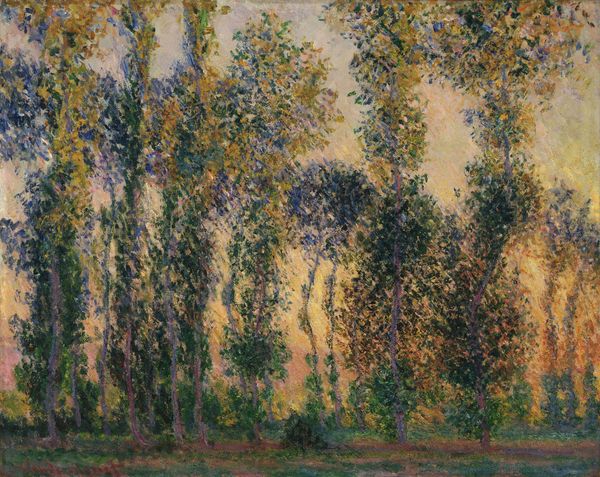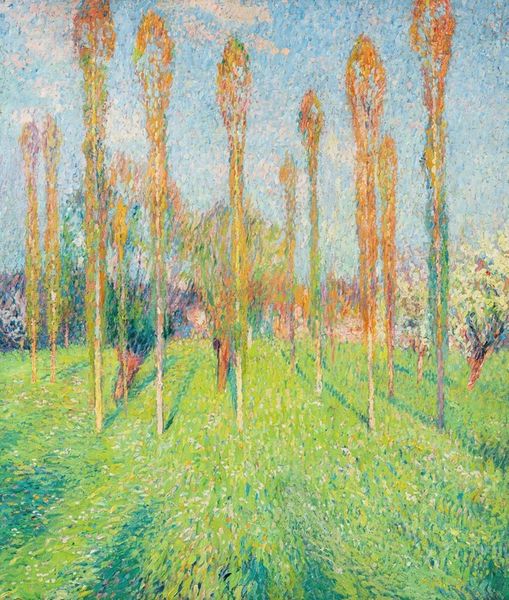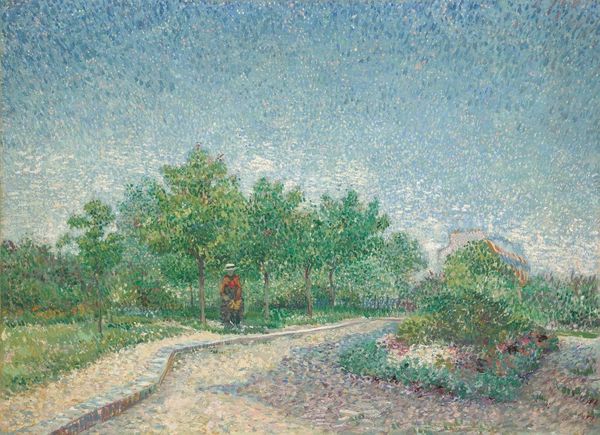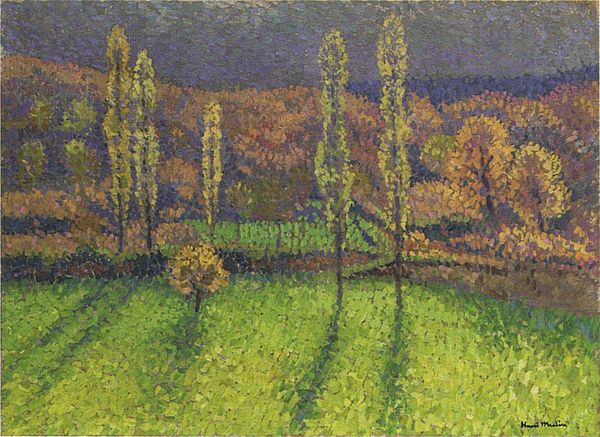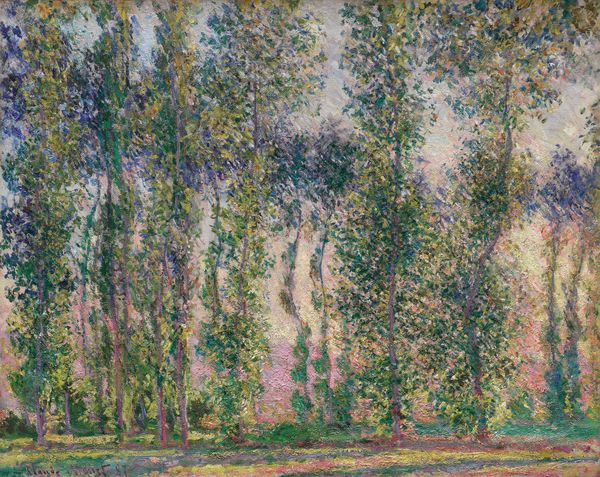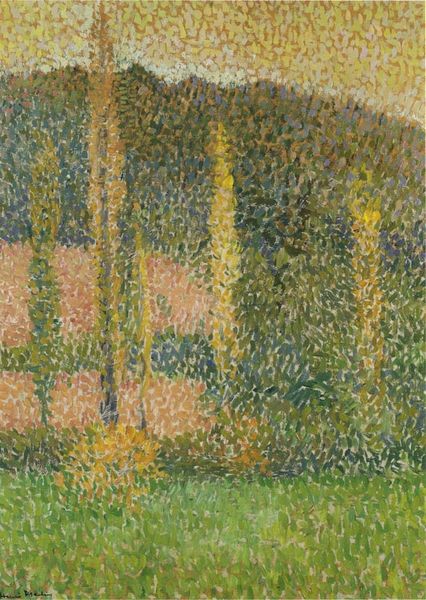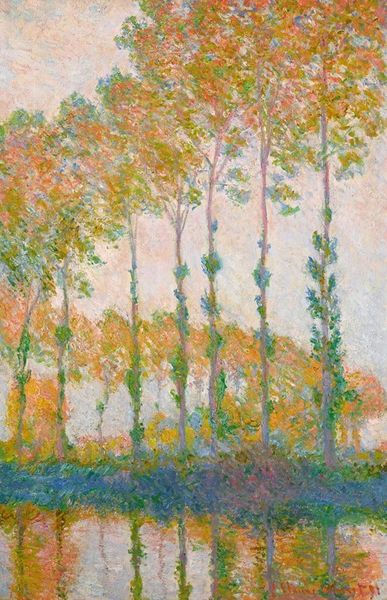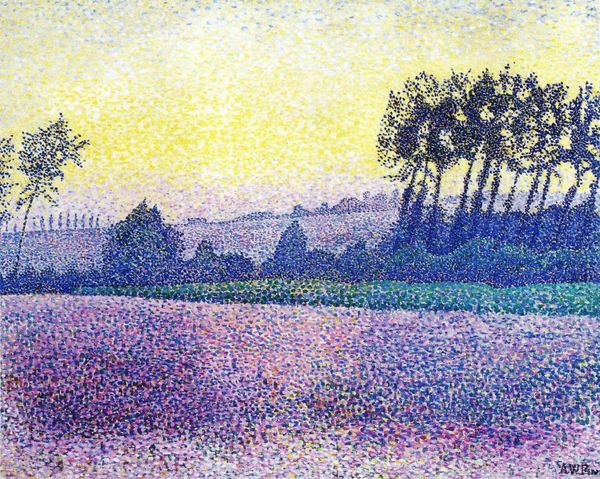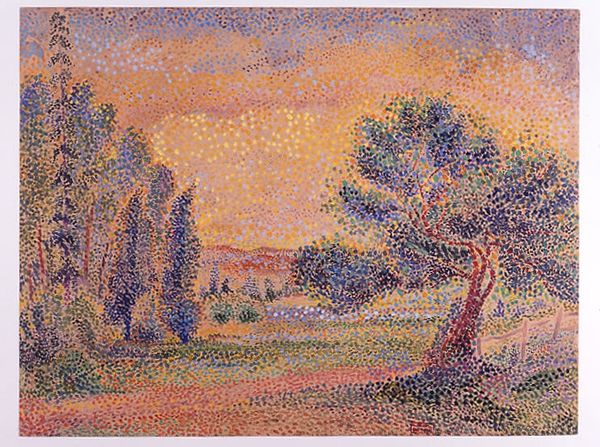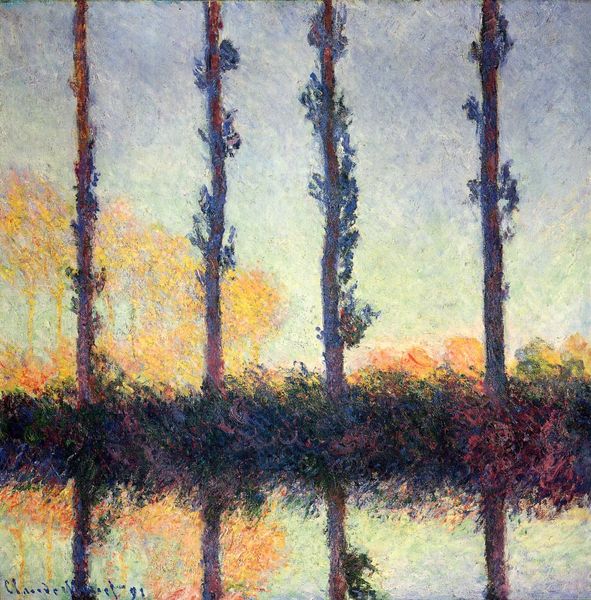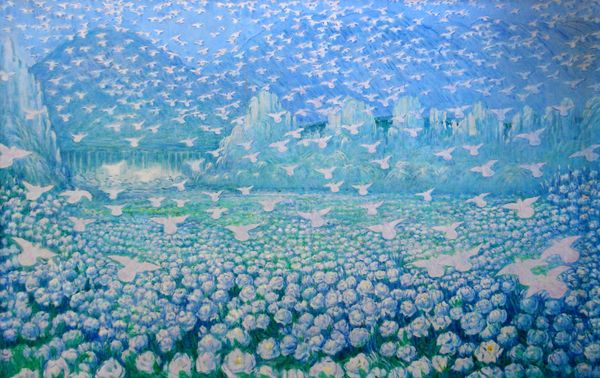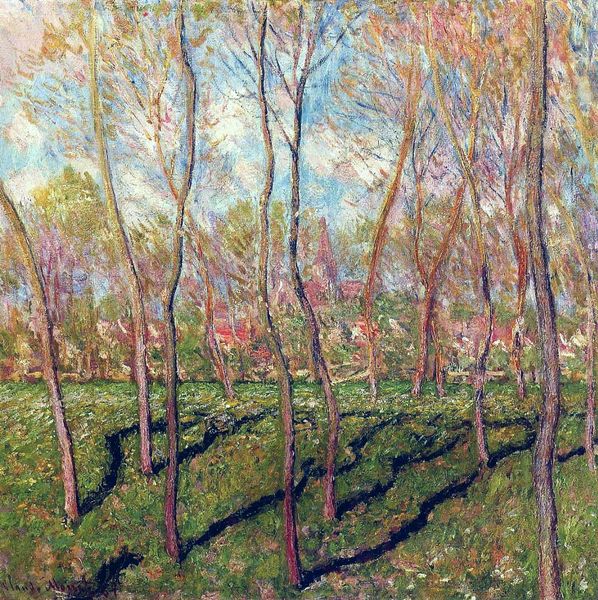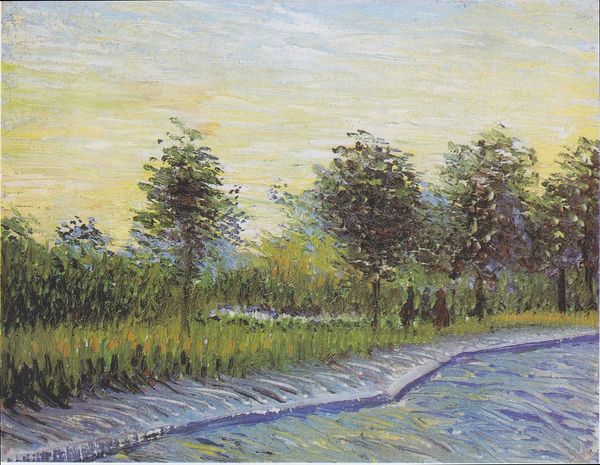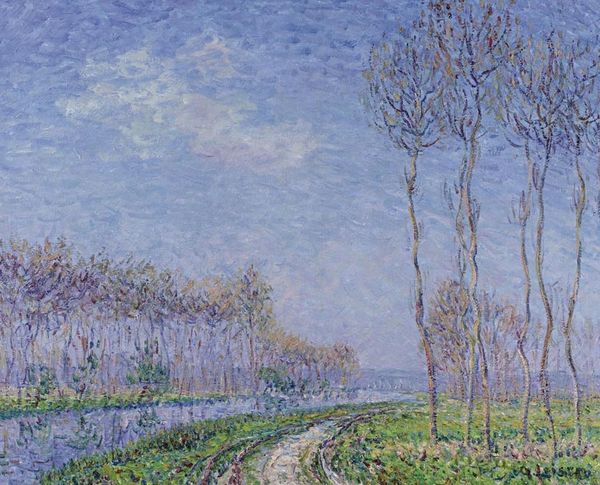
painting, plein-air, oil-paint, impasto
#
painting
#
impressionism
#
plein-air
#
oil-paint
#
neo-impressionism
#
landscape
#
impressionist landscape
#
figuration
#
oil painting
#
impasto
#
geometric
#
cityscape
#
post-impressionism
#
modernism
Copyright: Public domain
Curator: Léo Gausson's "Village derrière les arbres," painted around 1890, invites us into a pastoral scene rendered with meticulous pointillist technique. What are your immediate thoughts as you take in this village hidden behind the trees? Editor: You know, it makes me feel a bit like a kid playing hide-and-seek. The trees create this amazing screen, and I want to peek through and see all the secrets this little village holds. The dappled light is enchanting, like little bursts of joy scattered everywhere. Curator: That sense of playful discovery resonates well. Gausson, influenced by Seurat and Signac, uses the Neo-Impressionist style to depict not just the surface of the landscape but also its underlying structure and light qualities. This piece emerged in a time when ideas about modernity and rural life were intensely debated in France. Editor: It's funny, you mention modernity, but it feels so…unchanged by it all. The colours, the dots, almost make the image vibrate. It is almost as if the landscape itself is exhaling a quiet energy. It reminds me of hot summer afternoons. Did Gausson make many pieces like this? Curator: Gausson’s work often explored similar themes of rural life, imbued with a utopian vision characteristic of some Post-Impressionists. But his engagement was more than aesthetic; it was deeply intertwined with anarchist ideals, the desire for social reform that underpinned many artistic movements at the time. The village becomes not just a landscape, but a symbol. Editor: Ah, that's it. It’s a comforting utopia. It is strange; these little towns are anything but peaceful in my experience. Kids fighting, lovers arguing, dogs barking. But somehow Gausson renders it so still... Is that the anarchist dream right there? Peaceful, coexisting beings? Curator: Perhaps. What interests me is how Gausson invites us to consider our own position in relation to this landscape. We are both included, because it is presented so accessibly with warm light, and excluded by the trunks that frame our view and make us voyeurs. The impasto, the tiny dots, become almost pixelated in our current digital age, giving it all a modern feeling. Editor: What I love is how relevant all that seems today, even from a distance of well over a hundred years. Curator: Indeed. It reminds us that, in examining historical artwork, we are invariably reflecting on the concerns of our own time. Editor: So true. Maybe that's what all good art does! Thanks for the insight.
Comments
No comments
Be the first to comment and join the conversation on the ultimate creative platform.
